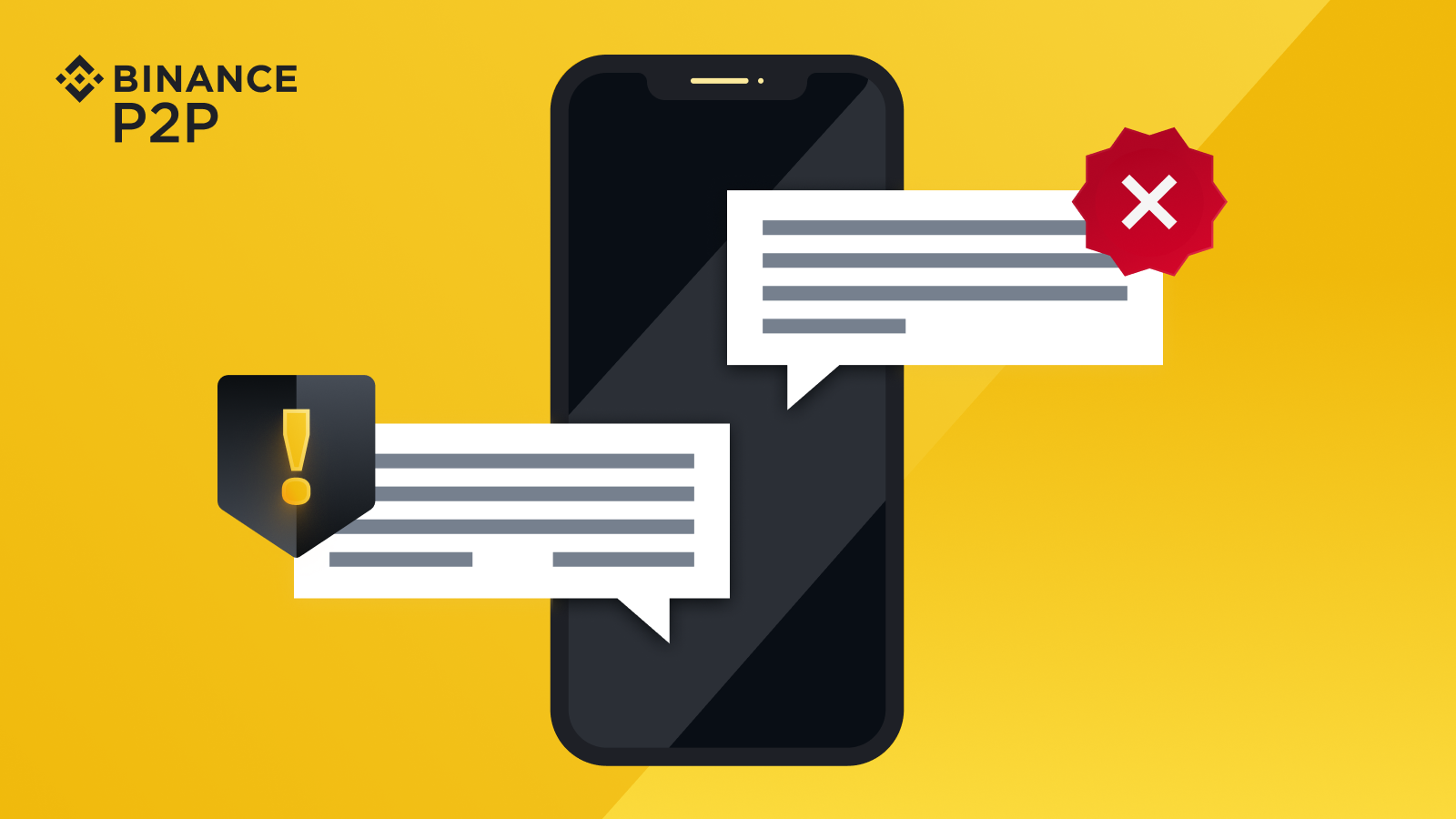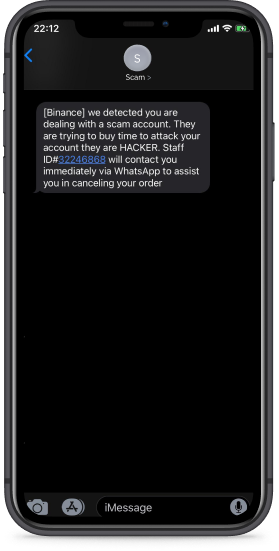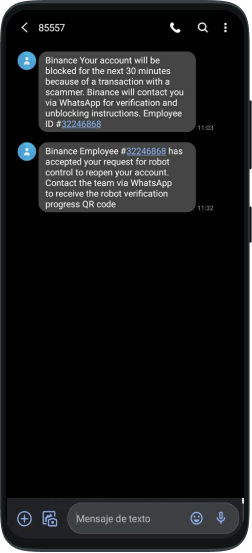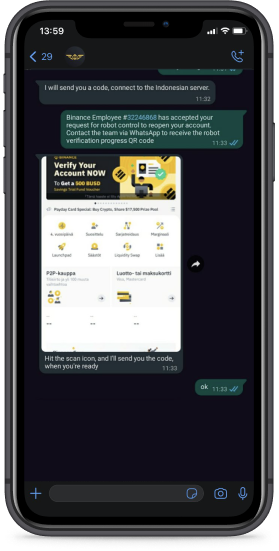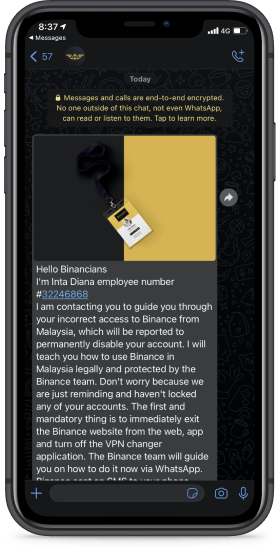Navigating the Minefield of Fake Sms Scams in Peer-To-Peer Crypto Trading
Main Takeaways
Fake SMS scams are proliferating in cryptocurrency trading, where scammers impersonate trusted sources to trick investors.
Crypto users face numerous scams, including messaging, verification code, phishing, account suspension, QR code scams, and customer service impersonation.
Users can fend off scams by adopting high-security practices, validating all transactions internally, and ignoring suspicious external interactions.
In today's digital world, Peer-to-Peer (P2P) cryptocurrency trading has emerged as a popular and lucrative investment avenue. However, increased activity and popularity have also led to a rise in fraud attempts, particularly through fake SMS scams, known as SMS spoofing.
What is SMS Spoofing in Crypto Trading
SMS spoofing in crypto trading is an increasingly prevalent tactic utilized by scam artists aiming to trick investors and gain unauthorized access to their accounts or performing operations that comprise their financial security, like releasing cryptocurrency during a peer to peer transaction without confirming that the money is in the bank account.
It involves masking sender information in text messages to appear as if it's coming from a legitimate or trusted source, such as a reputable cryptocurrency trading platform or a bank. This masking of information gives these malicious messages an air of authority, which can lead to unsuspecting investors divulging sensitive information.
There are essentially two types of deceitful SMS schemes:
1. The most common and damaging one is a fraudulent confirmation message. Here, the seller receives a fake SMS stating that a transaction has been completed. This deceptive message tricks the seller into believing that they have already received the payment, leading them to release cryptocurrency when in fact, no payment has come through.
2. The second scheme involves SMS messages containing phishing links, similar to what has been described in this paragraph. What's notable here is that these messages can sometimes originate from a number previously used by Binance for sending official communications. This suggests scammers may employ phone number manipulation to lend credibility to their fraudulent activities.
6 Most Common SMS Scams
1. Fake bank payment confirmation
Scammers often impersonate your bank, confirming that you receive the payment in your bank account. The same amount the crypto buyer is supposed to transfer to your account.
The key to remember here is to only transfer crypto to buyers once you have confirmed receipt of payment in your bank account. Do not trust SMS notifications.
2. Messaging Scams through Text and WhatsApp
It's been widely reported among Binance users that they receive fraudulent text messages claiming to be from Binance staff. The message asserts that their account is compromised, and a supposed Binance representative (carrying a counterfeit employee ID) will reach out via WhatsApp to help.
In reality, it's the same scammer on WhatsApp, convincing users to transfer their crypto assets to a so-called secure Binance-approved account. This scam leads to users losing their funds as they are blocked on WhatsApp and the scammer becomes unreachable.
Defending Against WhatsApp and Text Message Scams
Any texts claiming to be from Binance staff should be ignored. Numbers should be promptly blocked and reported to Binance security. Under no circumstances will Binance request account details via text, WhatsApp, email, or any other means.
3. Deceptive URL (Phishing) Scams
Phishing scams happen when scammers trick users into clicking a fraudulent link, often sent via email or text message. These links direct users to fake websites resembling Binance. Once users enter their login details, scammers acquire what they need to hijack these accounts. Also, they can manipulate the phone number.
Dodging Phishing Scams
Ensure to log in via the official Binance website only and utilize updated browsers. If not done already, enable 2-factor authentication. Binance also offers an anti-phishing code for added security.
4. Account Suspension Scams
Users have reported receiving threats via text message from scammers impersonating either Binance staff or law enforcement threatening to block their accounts unless instructed actions are taken. This type of scam often involves a follow-up phone call asking for the code sent via text message.
Securing Against Account Suspension Scams
It's important to bear in mind that Binance will never request you to click a link or enter a code to unblock your account.
5. QR Code Scams
This scam operates similarly to the account suspension scam, with the addition of a QR code sent via WhatsApp. The scammer, posing as Binance staff, sends a message asking for account verification along with a QR code. Scanning and sharing this code provides the scammer with account access, leading to a loss of funds.
Preventing QR Code Scams
Avoid all communications with anyone alleging to be Binance staff. For any concerns regarding your account, log in directly to Binance through a safe, updated browser.
6. Impersonation of Binance Customer Service
Scammers often impersonate Binance customer service during a P2P transaction, requesting you to release cryptocurrency without payment.
The key to remember here is to only transfer crypto to buyers once you have confirmed receipt of payment in your bank account. Customer service doesn't intervene in user transactions or communicate within P2P chat. Always report suspicious behavior.
Conclusion
As P2P crypto trading continues to evolve, scammers also find new methods to exploit users. Therefore, stakeholders must remain educated and cautious. While platforms like Binance are working tirelessly to keep scams at bay, ultimately, users must adopt a safety-first approach to keep their investments secure.
Remember, if something seems too good to be true, it most likely is. Trust your instincts, and when in doubt, seek assistance from Binance support. Stay safe and happy trading!
Further Reading
Intro to Peer-to-Peer Trading: What is P2P Trading and How Does a Local Bitcoin Exchange Work?
Recognizing and Preventing Fake Email Scams: Stay Secure Online
Disclaimer: Your use of Binance P2P services and all information and other content (including that of third parties) included in or accessible from Binance P2P services is at your sole risk. Our only responsibility is to handle crypto transactions. All payments are final upon completion unless otherwise required by law. The Binance P2P platform has neither the right nor obligation to resolve any disputes arising from a completed payment. Neither the Binance P2P platform nor its merchants shall be responsible for any loss after a completed payment.
